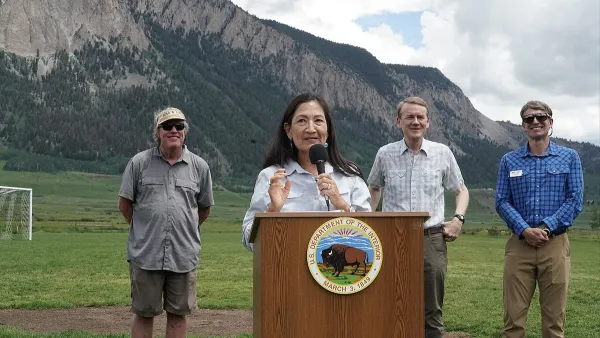How sustainable is the internal combustion engine? The answer depends, in part, on your historical perspective. This point becomes startlingly evident in a recent article by UCLA doctoral student Eric Morris in the most recent issue of Access magazine. The magazine publishes accessible versions of academic research and is published by the University of California Transportation Center at Berkeley.
How sustainable is the internal combustion engine? The answer depends, in part, on your historical perspective. This point becomes startlingly evident in a recent article by UCLA doctoral student Eric Morris in the most recent issue of Access magazine. The magazine publishes accessible versions of academic research and is published by the University of California Transportation Center at Berkeley.
In From Horse Power to Horsepower, Morris takes us back to the turn of the 20th century. Horses were the primary mode of transportation, and they were killing our cities. Not only were cities densely populated, but horses had to be stabled and fed. Virtually all goods and services had to be transported by horse. Rising incomes and trade meant horse power was even more accessible to a broader number of people and businesses.
The environmental consequences were staggering. In New York and Brooklyn alone:
· 3-4 million pounds of manure had to be cleared each day
· 40,000 gallons of urine had to be disposed of each day
· 15,000 dead horses had to be carted off each year
· Fatalities from horses were 75 higher than today's fatality rate for autos.
What saved New York (and other big cities) from this environmental disaster? The automobile.
"As difficult as it may be to believe for the modern observer," Morris writes, "at the time the private automobile was widely hailed as an environmental savior." In addition, the broad use of the automobile allowed humans to significantly reduce their footprint on the earth as thousands of acres of land were no longer necessary to grow hay, oats, and other feed.
Morrris concludes:
Today, many observers believe that only a drastic reduction of travel and/or switch to slower and more inconvenient modes can mitigate transportation's negative externalities. But neither draconian regulations nor disincentives for travel were necessary to fix the horse pollution problem. Human ingenuity and technology (enabled by government, which provided infrastructure and regulations) did the job-and at the same time they brought a tremendous concurrent increase in mobility.

National Parks Layoffs Will Cause Communities to Lose Billions
Thousands of essential park workers were laid off this week, just before the busy spring break season.

Retro-silient?: America’s First “Eco-burb,” The Woodlands Turns 50
A master-planned community north of Houston offers lessons on green infrastructure and resilient design, but falls short of its founder’s lofty affordability and walkability goals.

Delivering for America Plan Will Downgrade Mail Service in at Least 49.5 Percent of Zip Codes
Republican and Democrat lawmakers criticize the plan for its disproportionate negative impact on rural communities.

Test News Post 1
This is a summary

Test News Headline 46
Test for the image on the front page.

Balancing Bombs and Butterflies: How the National Guard Protects a Rare Species
The National Guard at Fort Indiantown Gap uses GIS technology and land management strategies to balance military training with conservation efforts, ensuring the survival of the rare eastern regal fritillary butterfly.
Urban Design for Planners 1: Software Tools
This six-course series explores essential urban design concepts using open source software and equips planners with the tools they need to participate fully in the urban design process.
Planning for Universal Design
Learn the tools for implementing Universal Design in planning regulations.
EMC Planning Group, Inc.
Planetizen
Planetizen
Mpact (formerly Rail~Volution)
Great Falls Development Authority, Inc.
HUDs Office of Policy Development and Research
NYU Wagner Graduate School of Public Service




























